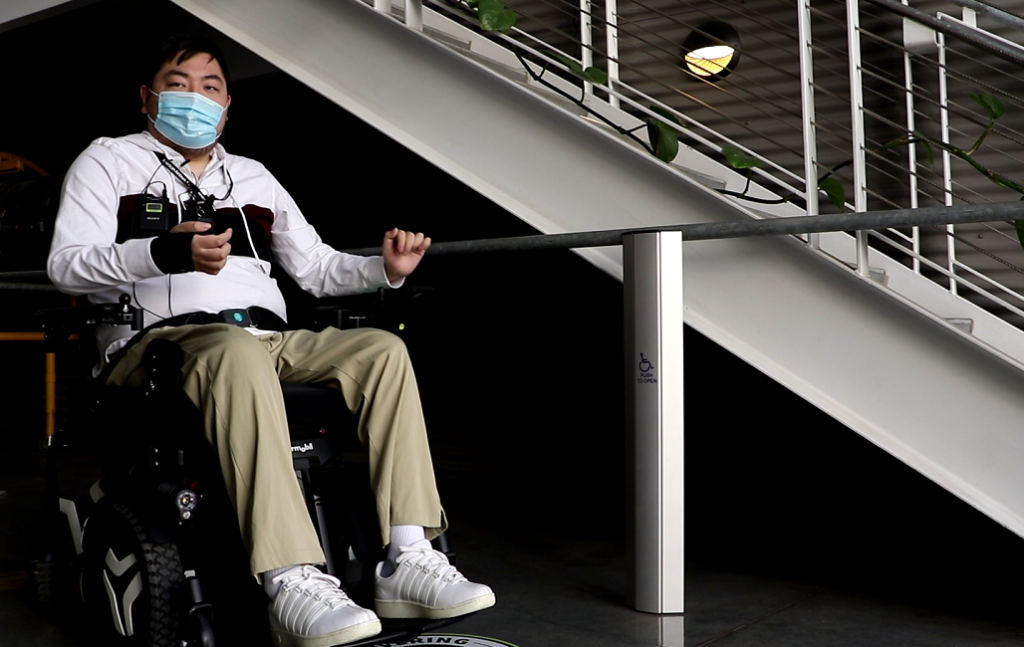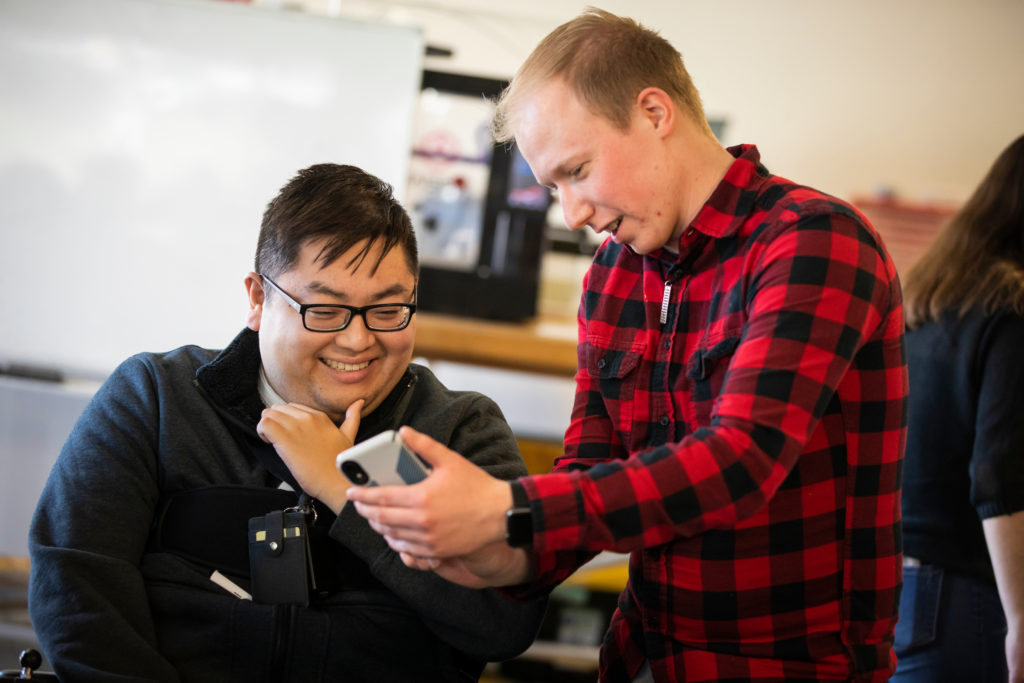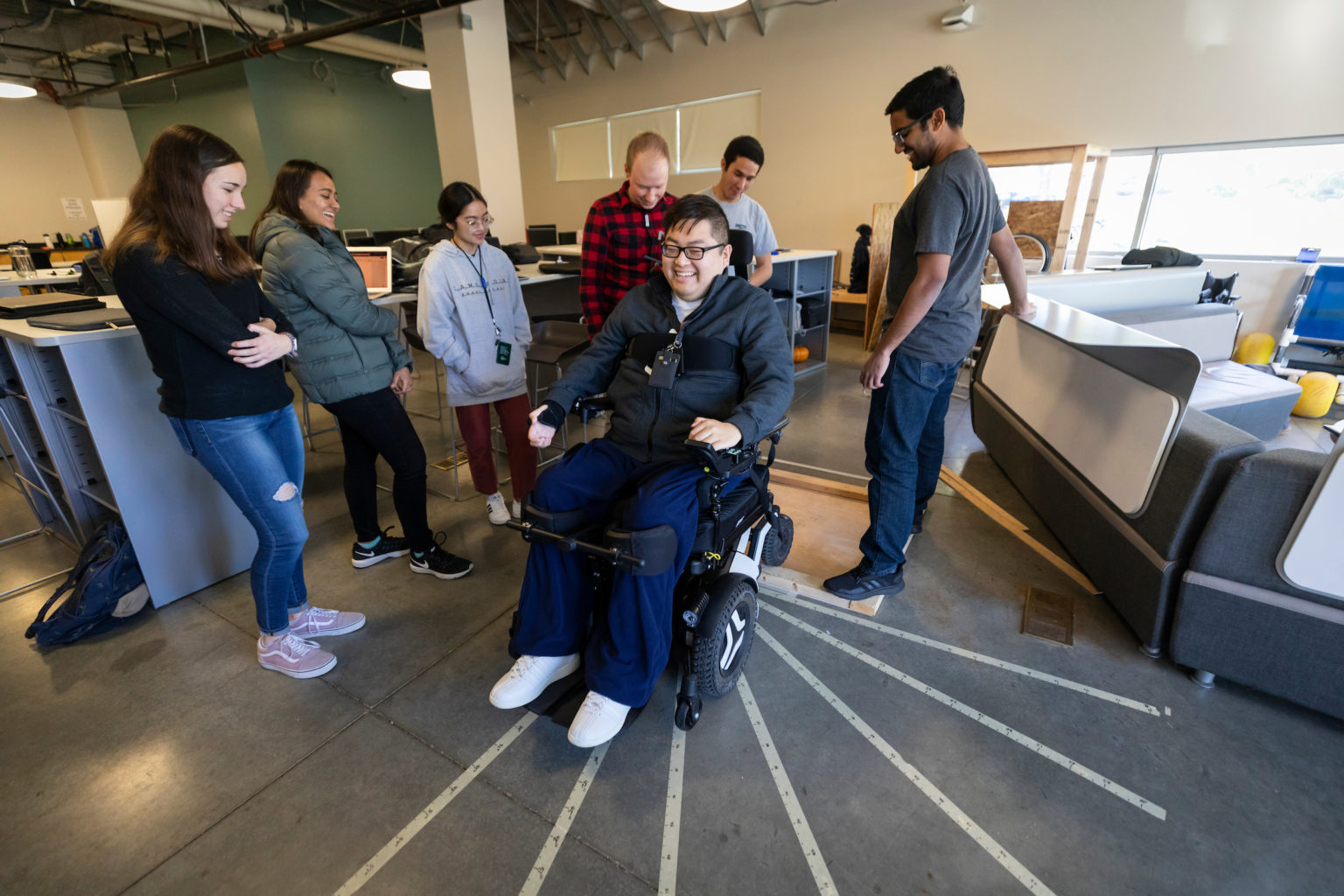Nine years after an accident that nearly killed him, AERO major Alex Fung is reaching for the stars.
Unable to move at the bottom of a Big Sur cliff, Fung patiently waited for help, coordinating his breathing rhythm with the sound of ocean waves.
As the sky began to darken, he heard the relieving sound of a helicopter. But when emergency responders descended, one of them saw a motionless figure on the rocks and immediately called for a body bag.
“No – I’m alive!” Fung managed to say, his voice craggy from hours of isolation.
Nine years after he was airlifted from peril, the aerospace engineering student fantasizes about a life with zero gravity while helping to make campus more accessible. But while others will benefit from his actions for years to come, Fung doesn’t think of himself as a hero.

“I think the school has been very open to addressing all these issues because they are more focused on the larger picture of all students and future students,” he said, not far from the recently installed technology that makes it possible for him to open the doors to the Brown Engineering Building without help. “While I’m focused on how I can improve my own student life.”
His student life wasn’t as much of a concern when his accident happened in 2012. Then 21, the San Francisco resident was studying business administration at a community college, but not doing well.
“I didn’t have that discipline,” he said. “And I had terrible grades.”
Fung was hiking with friends when he fell 200 feet. After he was rescued, surgeons placed a titanium plate in his neck and fused his vertebrae and neck back together. Rehabilitation followed.
“It didn’t really hit me that my life was going to be drastically different until I actually left the rehab center and got home,” he said.
Repeated returns to the hospital were accompanied by depression and then what he calls “moping around” for the next four years.
“Going back into society, nobody really understands your disability and that caused me to feel very distant from the people that I had previously been close to,” he said. “One of the things that made me feel the loneliest was at large events with large crowds. People would naturally just sort of part to give way – and it’s definitely an act of goodwill, they want to give me space – but as a wheelchair user, it felt like I was unintentionally being isolated, like I had this empty bubble around me.”
Finally, seeing his friends moving on, the passage of time forced him to reassess his future. Business no longer appealed to him, and he started thinking about hobbies: computers; tinkering with cars; astronomy; and science fiction.
“I had a particular fondness for post-Apocalyptic things,” he said.
So Fung enrolled in Cal Poly in the fall of 2019 as an aerospace engineering student. At 30, Fung, who once boasted a 0.76 GPA in community college, is now a Dean’s List regular with renewed discipline.
He has also helped other students gain valuable engineering skills: After he arrived in San Luis Obispo, he posted an ad seeking a part-time care assistant, which was seen by the president of a student club now named EMPOWER.
“The president of the club contacted me and asked me whether there was anything that I could think of that they could design to improve my quality of life,” Fung said.
Fung said he could use a lift that would allow him to transfer from his wheelchair to hotel beds. Prior to the pandemic, Fung frequently traveled to see family in Hong Kong thanks to his dad’s airport job.
EMPOWER members began working with Fung in 2019.
“When I met him, just right away he has the most bubbly personality, which matches me very well,” said Kyle Ladtkow, a now-graduated mechanical engineering student who initially headed the Lift for Alex project. “I’ll text him about something and I’ll be, like, ‘Hey, what do you think about driving on two rails through the lift,’ and he’ll be, like, ‘Yeah, that sounds good’ – and then send me a meme or something.”

“I have a, ah . . . unique sense of humor,”said Fung, who is sponsoring a mechanical engineering senior project with a power wheelchair this year.
That sometimes dark sense of humor helps him avoid frustrations whenever encountering accessibility issues. But he has also voiced his concerns. As a result, the Aerospace Engineering Department has worked with the Disability Resource Center to make campus more accessible, installing electric doors, for example, in the Brown Engineering Building and Engineering IV Building. More changes are in the works, including a wheelchair-accessible path to the Aero Hanger.
“I think we are better prepared for future students with accessibility needs,” said David Marshall, chair of the Aerospace Engineering Department.
Fung wants to be a role model for others with physical challenges. A year ago, he became involved with the Northrop Grumman Collaboration Project, a club that builds autonomous vehicles. One project he has worked on as a systems engineering team lead entails three different autonomous drones that could be used to rescue incapacitated hikers stranded in difficult terrain.

“Northrop Grumman provides us with a new project proposal every year, and it just so happened that this one had relations to stuff that happened to me in the past,” he said. “It definitely became much more important and personal after I realized how closely the project was related to me.”
As a student, Fung dreams of becoming involved in extraterrestrial colonization, where the prospect of zero gravity offers the promise of moving much differently. Whether space colonization becomes a
reality or remains in the realm of science fiction is irrelevant. What’s important is that Fung thinks more about the future than the past – starting with the day he desperately tried to call out, “I’m alive!”
“It has affected my life, but it’s no longer my daily concern.”

